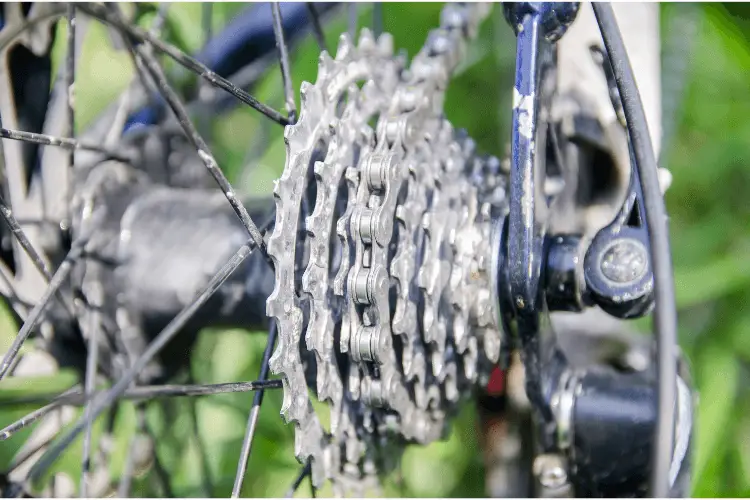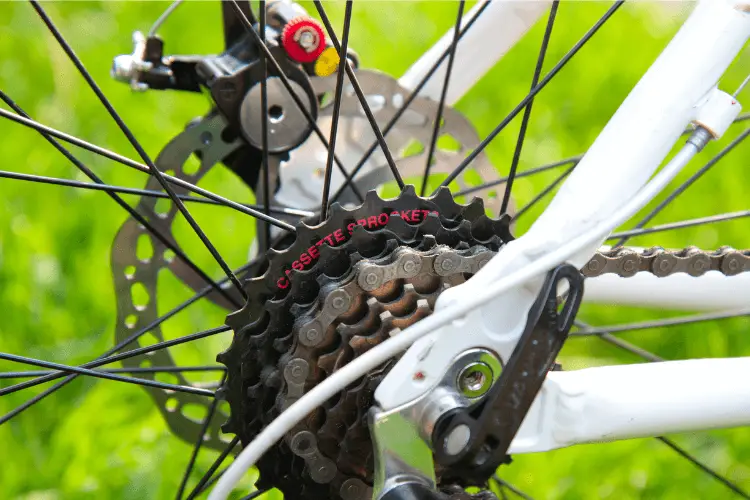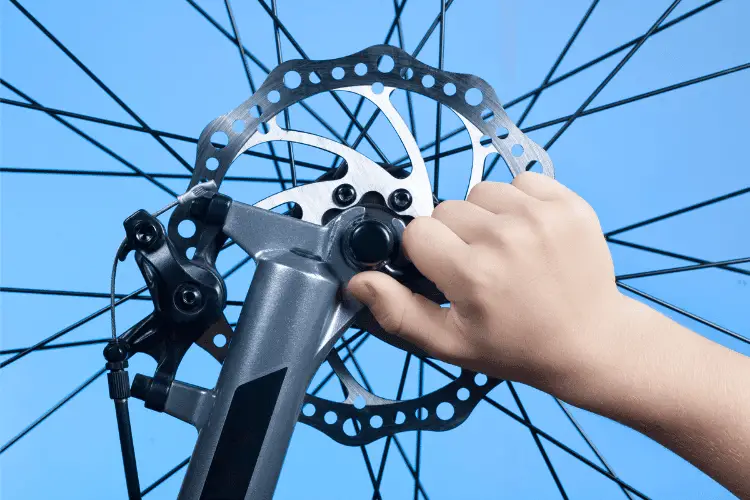A wobbling cassette can be caused by either a loose cassette or a damaged tooth and chainring that prevents the cassette from being completely straight in its holster.
It can be annoying, but if ignored for a long time, it might lead to more severe damage.
In this blog post, we’ll discuss why cassettes wobble and how to repair them so that it never happens again.
Quick Navigation
Is Cassette Wobbling Normal?
Yes, cassette wobbling is normal. This is a common issue with many bicycles. The issue occurs because of the chainrings or a loose cassette.

The bike’s performance is usually unaffected by this wobbling, but it can make one uncomfortable.
When left unattended for an extended period, it causes severe damage to the bike. The parts might wear out, leading to injuries or an accident.
So, you should fix the issue once you notice it.
Should My Cassette Wobble?
No, cassettes shouldn’t wobble. Cassette wobbling hints that there are issues or that it needs maintenance.

A lot of things could be responsible for these issues. If it is wobbling or loose, you should have your cassette repaired or replaced as soon as possible.
It can also imply that the bearings need to be replaced. The freehub body is made in such a way as to bear the weight of pedaling pressure on the cassette.
But if the lubricant used is too small or in excess, pressure will be mounted, causing it to wear out.
This will make the wheel slightly shift as you pedal, and you might even feel it slipping out of its alignment.
Also, it makes bike riding uncomfortable, puts other road users at risk, and can damage other parts of your bike.
What Causes a Bike Cassette to Wobble?

There are many reasons your cassette won’t work correctly.
The most frequent causes are listed bellow :
i. Poorly Adjusted Chainrings or Cogs
Always check your chainrings and cogs to see if they are correctly adjusted. The cassette will wobble if one of them is bent or if they are too far apart.
ii. Poorly Adjusted Tensioner
Another reason a cassette wobble is a tensioner that’s not fixed correctly. This occurs when one side of the tensioner is tightened too much. This will cause it to bend outward, thereby applying pressure to the axle spindle.
iii. The Chain Is Worn Out or Damaged
The cassette may wobble if the chain is worn out because it will slide off the sprockets. You should frequently check your chain and replace it, when necessary, usually every 1,000 miles.
iv. The Hub Has Worn-Out Bearings
A worn-out hub will also make your cassette wobble if the bearings don’t provide adequate resistance. This means they will spin freely instead of being engaged by a gear.
Here is an ultimate guide on Why Bike Chain Won’t Go Backward? (How To Fix)
v. Bent Axle Spindle
A bent axle spindle is yet another cause for a cassette to wobble. It occurs when your bike is at top speed and you hit something solid such as a rock or tree trunk.
The impact may cause the spindle to bend slightly. And then come into contact with the bottom bracket region when you pedal backward.
This will lead to more damage and an imbalance between the two sides of your bike’s drivetrain system.
vi. Badly Manufactured Hub
A fault can occur during the manufacturing process. The hub’s body and the freehub body, which the cassette slides on, should be straight. And the sides of the freehub’s flanges should be parallel to one another.
Also, there could be a slight deviation in the hub body on one side (less than 1mm). This affects the wheel revolving, as the cassette will go up and down similarly.
This problem is common among low-end hubs, where quantity is preferred over quality.
vii. Improperly Tightened Cassette
When cassettes are not tightened properly, they might loosen and start to wobble. You can remove the wheel to check if the cassette is loose at such points.
Then try to slide it back and forth. If a tiny movement occurs, then know it’s not tight enough. So, it would be best if you tightened it properly.
To do that, you should follow these steps :
- Quick-release the rear wheel after removing it.
- The cassette tool should be inserted into the cassette’s cutout.
- Grab the tool with a socket or a wrench, depending on the model.
- The cassette tool should be turned clockwise.
viii. No Spacer
A lockring is used to keep the cassette attached to the freehub body. The cassette won’t be able to be fully tightened if the cog doesn’t extend over the freehub body.
This situation can occur when the cassette is too small for the specific hub. An example is the use of a 7-speed cassette on an 8-speed hub.
When fitted on an 8-speed hub, the 7-speed cassette’s smaller design creates a tiny gap. And it cannot be secured on that hub unless the user installs a spacer.
How Do You Fix a Wobbly Cassette?

The first thing to do is to ensure the nuts on your derailleur are tight. If they can be moved by hand, you need to tighten them with an Allen key or socket wrench.
Following that, try the following other options:
1. Verify the Length of Your Chain
It will be difficult to shift if it is excessively long and sags under your weight. Also, it will cause your cassette to wear out more quickly than usual.
2. Check If Anything Is Stuck
Make sure there isn’t anything stuck in the cassette’s teeth, especially if you’re cycling on the sand.
But if you find out that your cassette is loose, examine the lock ring. This is especially if it’s an old one or has been replaced with a less expensive substitute (e.g., aluminum instead of steel).
Also, verify that the lock ring is fastened to the shell of the frame and bottom bracket. If necessary apply more lubricant after that tighten everything up again.
Conclusion
From this blog post, we have been able to understand that a lot of reasons make cassettes wobble.
So, when next you experience it, check if the cause is something you can fix. But if not, do not delay visiting a bike expert.
Only a bike expert can examine it and be sure the wobbling is not because of other serious issues.

5 thoughts on “Why Is My Cassette Wobbling? (Answered)”